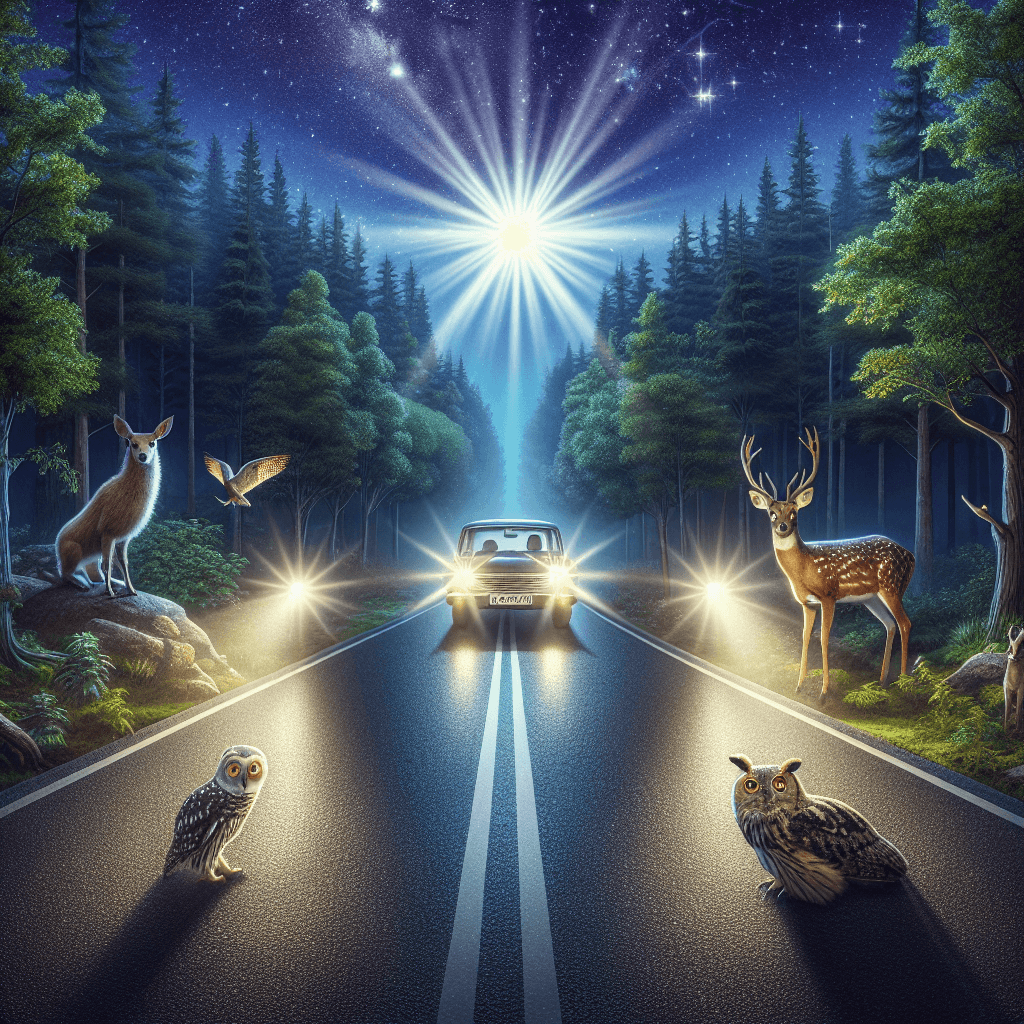Why do deer and other animals freeze when caught in headlights
It's not fear that paralyzes a deer in the road; it's a physiological trap where their incredible night vision and ancient survival instincts spectacularly backfire.


Too Long; Didn't Read
TLDR: The sudden bright light overwhelms an animal's sensitive night vision, causing temporary blindness. This triggers their natural survival instinct to freeze, hoping the perceived predator will not see them and move on.
Deer in the Headlights: The Scientific Reason Why Animals Freeze
It’s a scenario familiar to anyone who drives on rural roads at night: a pair of glowing eyes suddenly appears in the darkness ahead. As your car barrels forward, the animal—be it a deer, a rabbit, or a raccoon—remains utterly motionless, seemingly mesmerized by the approaching beams. The common phrase, "like a deer in the headlights," perfectly captures this moment of baffling paralysis. But is the animal mesmerized, stubborn, or simply unintelligent? The truth is far more complex and rooted in a fascinating intersection of biology and instinct. This post will illuminate the scientific reasons why animals freeze when caught in your headlights, revealing it's not a choice, but a profound and often fatal physiological and behavioral reaction.
A Blinding Betrayal: How Night Vision Fails
The primary reason animals freeze is due to a sudden and overwhelming sensory overload, specifically related to their vision. Many nocturnal and crepuscular (active at dawn and dusk) animals, including deer, have eyes that are exquisitely adapted for seeing in low-light conditions. Their secret weapon is a structure called the tapetum lucidum.
The tapetum lucidum is a layer of tissue located behind the retina that acts like a mirror. When light enters the eye, it passes through the retina, hits this reflective layer, and is bounced back through the retina for a second time. This process essentially gives the photoreceptor cells a second chance to absorb the light, dramatically amplifying the animal's ability to see in near darkness. It’s also what causes their eyes to shine or glow when a light is shone on them.
However, this incredible adaptation has a critical weakness. When an animal's eyes, fully dilated to capture every photon of available light, are suddenly blasted with the intense, focused beam of a car's headlights, the system is completely overwhelmed. The pupils cannot constrict fast enough to handle the deluge of light, causing a phenomenon similar to human "flash blindness." The animal is not staring at the car; it is temporarily blinded, and the world in front of it has become a disorienting wall of light.
Fight, Flight, or Freeze: An Instinct Mismatched for Modern Roads
With its primary sense of sight compromised, the animal’s brain defaults to its most basic survival instincts: fight, flight, or freeze. While a large animal like a moose might sometimes choose "fight" and a smaller one might try to "flee," the "freeze" response is an incredibly common and evolutionarily successful strategy.
Why Freezing is a Good Survival Tactic (Usually)
In the natural world, many predators hunt by detecting movement. By standing perfectly still, a prey animal can often blend into its surroundings and go completely unnoticed by a predator that is scanning the environment. Freezing also gives the animal a critical moment to stop, listen, and try to assess the nature and location of the threat before deciding its next move. For millennia, this instinct has saved countless animals from becoming a meal.
The problem is that a car is not a natural predator. It doesn't hunt by detecting movement, and it won't be fooled by camouflage. The "predator" in this case is a two-ton machine moving on a fixed path at high speed. The freeze response, which would be a brilliant tactic against a stalking wolf or cougar, is tragically ineffective against a vehicle. The animal’s ancient, hardwired instinct is fatally mismatched for this modern, man-made threat.
To summarize the situation from the animal's perspective:
- It is suddenly blinded by a painfully bright, unidentifiable light.
- It hears a loud, approaching noise but cannot see the source of the danger behind the light.
- Its survival instinct tells it to freeze to avoid detection and assess the situation.
This combination of temporary blindness and an instinctual freeze response creates the perfect storm, leaving the animal paralyzed in the middle of the road.
Conclusion: A Collision of Biology and Technology
The sight of a deer frozen in the headlights is not a sign of foolishness but a poignant example of an evolutionary adaptation clashing with the modern world. These animals are equipped with advanced night vision that is betrayed by artificial light and a life-saving instinct that fails them in the face of oncoming traffic. Their paralysis is a result of sensory overload and a deeply ingrained behavioral response that has, until the invention of the automobile, served them well. Understanding the science behind this phenomenon can foster a greater appreciation for wildlife and serve as a crucial reminder for drivers to remain vigilant and cautious, especially when navigating dark, rural roads.


